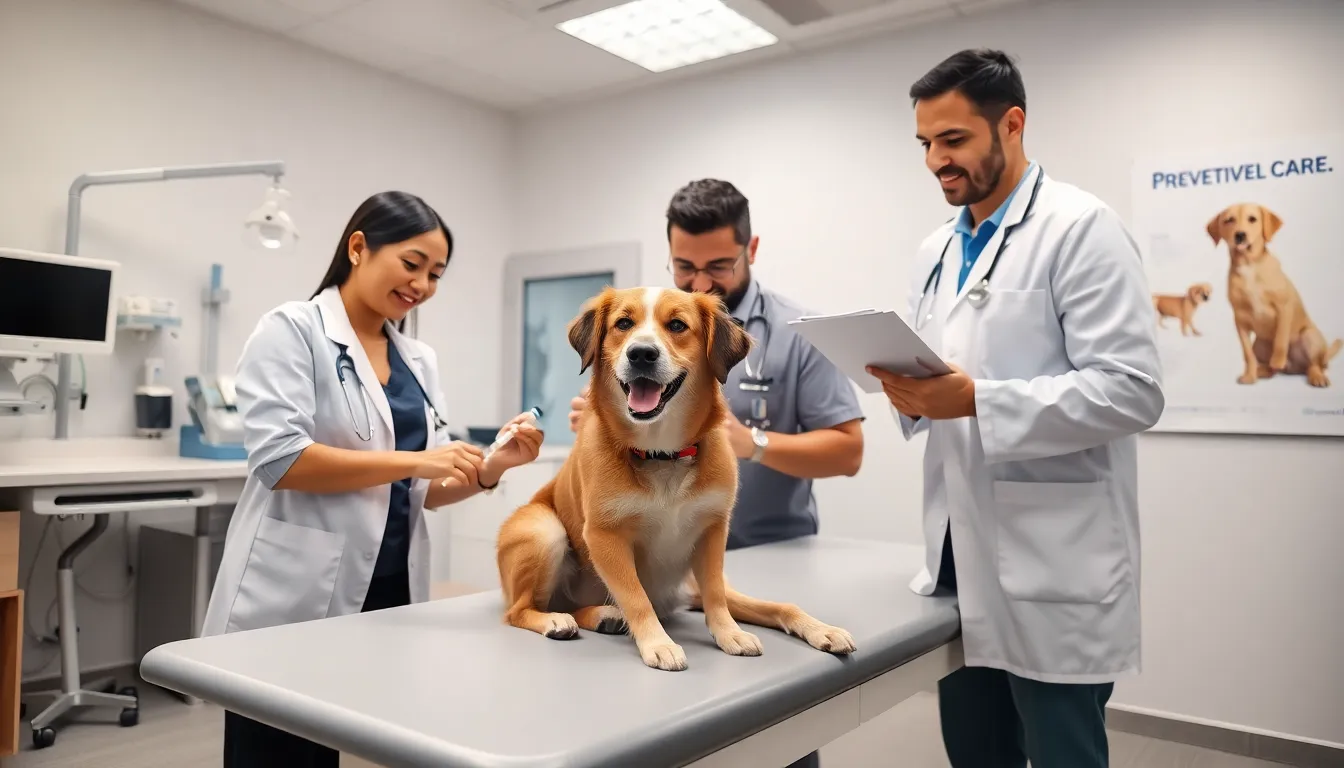Ever watched your furry friend prance around, blissfully unaware of the horrors awaiting them in their vet’s office? While they might be dodging incoming shots like a canine Matrix, you’re left worrying about the costs of keeping them in tip-top shape. But don’t fret. Pet insurance is here to save the day, especially when it comes to preventive care. You’ll find that a little peace of mind goes a long way, even if it costs less than your last fancy coffee order. So, let’s jump into the world of preventive care coverage. Your wallet will thank you.
Table of Contents
ToggleUnderstanding Preventive Care in Pet Insurance

Preventive care is all about keeping pets healthy before they get sick. Imagine preventive care as the superhero sidekick of pet ownership, swooping in to save the day. Regular check-ups, vaccinations, and flea prevention are part of this suite of services. Equipped with pet insurance, owners can ensure their beloved animals receive necessary care without financial strain. It’s like investing in a health insurance policy for your four-legged family member, only, it’s far less complicated. Knowing what pet insurance covers in this area can empower owners to take proactive steps toward their pet’s health.
Common Types of Preventive Care Covered
When it comes to preventive care, not all pet insurance plans are created equal. Generally, these plans may cover a variety of services:
- Routine Exams: Pets should see a vet at least once a year. These check-ups are essential for catching any potential issues early.
- Vaccinations: Several vaccines protect pets from diseases. Insurers often cover the core vaccines that keep pets safe.
- Dental Cleanings: Oral health impacts overall well-being. Regular cleanings can help prevent more serious health issues, and many plans include these.
- Flea, Tick, and Heartworm Prevention: These treatments are vital to keep your pet safe from pests. Insurances often contribute to the cost of these medications.
- Spaying and Neutering: Many plans also cover these procedures, which contribute to overall pet health.
Each insurance policy varies in specifics, so it’s crucial to read the fine print.
Benefits of Preventive Care Coverage
Having preventive care coverage is like having a safety net for pet health, freeing owners from financial anxiety. This proactive approach leads to healthier pets overall because it allows for early detection of possible health issues. Less stress for owners translates to happier, less anxious pets. By investing in preventive care, they reduce the risk of emergency visits or unexpected illnesses down the road. Coverage can also foster better compliance with necessary treatments: when costs are not a hurdle, pet owners are more likely to keep up with vaccinations and regular check-ups. Healthier pets mean happier lives, and what homeowner wouldn’t want that for their furry companion?
How to Choose the Right Pet Insurance for Preventive Care
Choosing the right pet insurance can feel overwhelming. But, focusing on a few key factors can ease the process. First, assess the coverage options available. Does a particular plan cover the preventive services that matter most for a specific pet? Next, consider the cost. Premiums vary widely, so it’s helpful to find a balance between affordability and coverage. Reading reviews can provide insight into how well each company handles claims. Finally, ask questions. A knowledgeable representative can clarify any uncertainties about coverage or exclusions. Pet owners should ensure they’re choosing an insurer that genuinely looks after their fur babies.
Cost Considerations for Preventive Care
When budgeting for preventive care through pet insurance, owners should consider various cost factors. Premiums, deductibles, and co-pays all play a significant role in overall expenses. Typically, preventive care plans can be lower in premiums compared to comprehensive plans. Several companies offer packages that focus specifically on preventive care, making them affordable. But, it’s essential to calculate out-of-pocket costs for different services and choose a plan that aligns with financial expectations. Besides, consider setting aside an emergency fund for out-of-pocket expenses: it’s an excellent strategy for unexpected vet bills.
